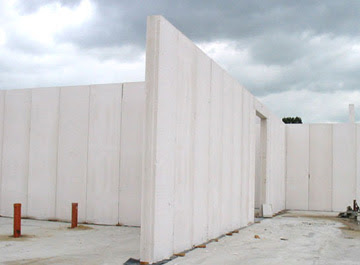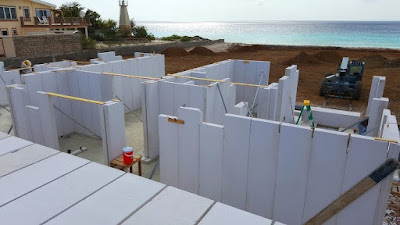ACC Wall Panels
The industry got a new member with ACC Blocks which were lightweight with ease of modification and workability. The block was porous which made them lightweight but also reduces their durability.
Here we are now looking at a new member in the building construction industry i.e. ACC Wall Panels which are derived from materials used in ACC Blocks but also contain rebars inside which imparts strength and enhances its durability. Being lightweight and workability similar to blocks but covering a large area at once made these new elements matter of talk.
They are 3 meters tall and can range in width with the companies specification. They are composed of quartz sand, calcined gypsum, lime, cement, water, and aluminum powder which are autoclaved under heat and pressure. These materials incorporate lightness, high thermal resistance, workability, and importantly strength. They are casted in molds in such a way that they have interlocking patterns which help in fitting and installing work.
These blocks are used in Multi-Residential Construction for non-loadbearing wall panels, which are fixed to a reinforced concrete structural frame. While in domestic residential buildings construction they are used as loadbearing wall panels which are limited to 1-2 storey built-up. For Industrial Construction, they are used as non-loadbearing wall panels spanning vertically and incorporated into industrial wall applications. Mezzanine doors and ceiling panels for fire exits are also now being made through ACC Wall Panels.



Comments
Post a Comment
Thank You for visiting, if you have any questions please feel free to ask: